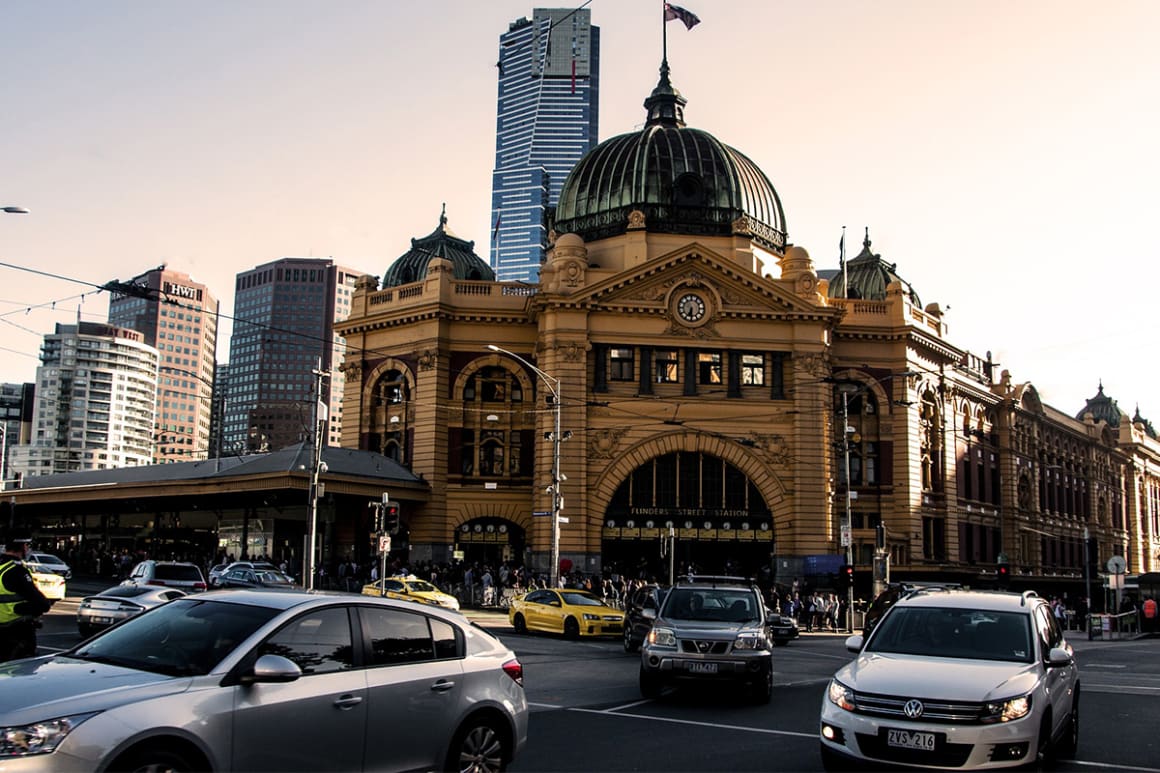The Grattan Institute nominates congestion charging rates for Melbourne

It’s that time again. Congestion charging discussion is back in the public realm and this time the experts have nominated a price and a - pardon the pun - road map to overhauling the road pricing regime in Australian cities.
The first phase, according to the Grattan Institute, should be introduced within 5 years and would introduce a cordon charge around CBDs. This would operate similarly to how the London and Singapore congestion charges were introduced.
The report's authors have nominated $5 as the one-way charge for private vehicles entering the cordon. For those that drive to the city, park, go to work and then drive home this, naturally, would represent a $10 return trip charge.
Furthermore, the Grattan Institute says the cordon charge of $5 should only apply from 8 am to 9:30 am and between 4 pm and 6 pm in the afternoon peak with lower charges at either side of the peak periods.
Beyond the initial CBD cordon charging regime, the Grattan Institute recommends applying charges to key arterial routes.
The arterial charges would apply on a per-kilometre basis on weekday mornings and afternoon peak periods, apply only in the peak direction, use enhance number plate recognition technology and include a fairness test and package to ensure vulnerable people are not disadvantaged.
Arterial charges would be introduced within 5 years of a successful CBD cordon charging regime.
Finally, the Grattan Institue recommends state governments should investigate costs and benefits of whole-of-network-based distance-based charging, presumably to replace the existing registration regime.
COMMENT
Calls for 'congestion charging' or 'road-pricing regime change' are not new. State Governments tend to dismiss those calls, just like they have with the latest release of research from the Grattan Institute.
Perhaps governments know that public transport networks couldn't cope with extra passengers if it was introduced in the very short-term, perhaps it's purely about the politics of change.
Regardless, this time around, the Grattan Institute has sought to address some of the often-used concerns - especially around the equity argument.
The institute’s research suggests of the 61,000 people who drive to work in Melbourne’s CBD, the majority of people have a weekly income of $1500 or more and are driving from the inner and middle rings of Melbourne’s suburbs.
The Grattan Institute says 45% of workers driving to the city have an annual income of $104,000 or more. In Sydney, that rises to 57%.
Notwithstanding tram capacity improvement projects, the biggest public transport capacity-increasing projects on the horizon in Melbourne is the Melbourne Metro project which will take three lines out of the city loop creating capacity for 3 other lines to increase services.
We know the Melbourne Metro project will be delivered by 2025 and in Sydney a similar major capacity increase for its CBD is underway with the Sydney Metro City & Southwest set to begin operations in 2024.
Notice those timeframes fit somewhat neatly with Grattan's call for the introduction of cordon charge within 5 years.
Fast forward to 2024/2025, the Victorian Government in power at that time will look a bit silly if it rolls out the "the best way to ease congestion is to build a public transport network system which can deliver more trains, more often – and we’re getting it done" if the calls for congestion charging are still being made.